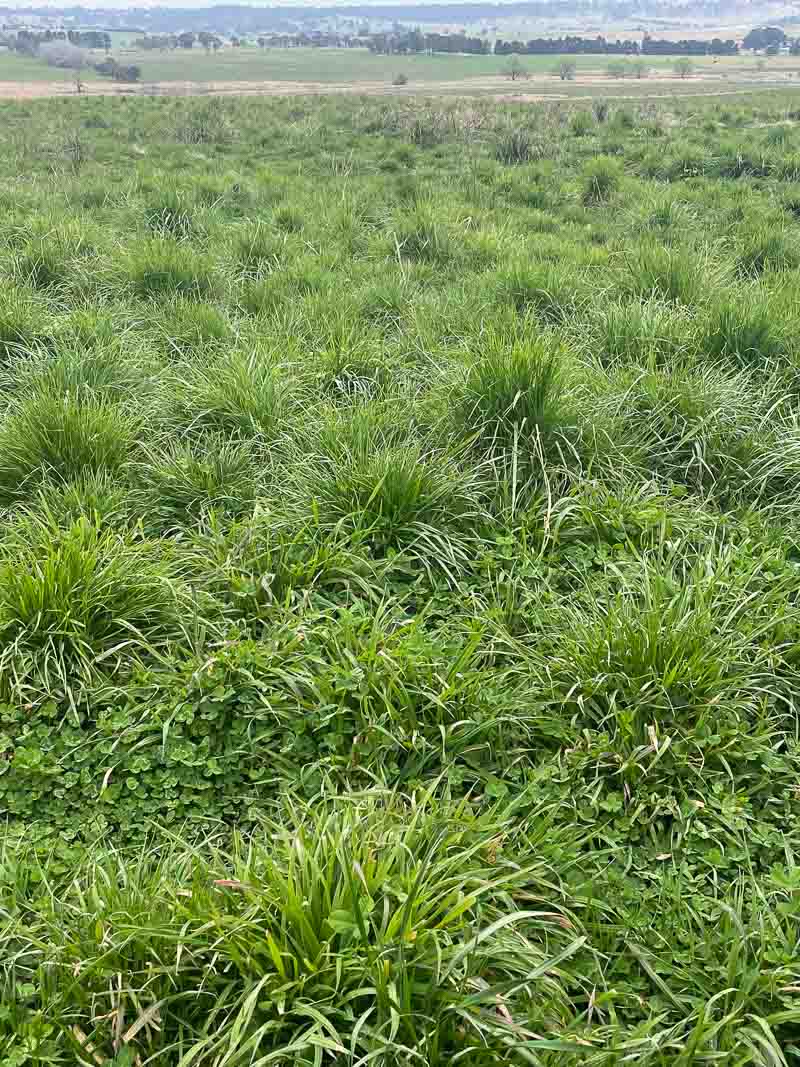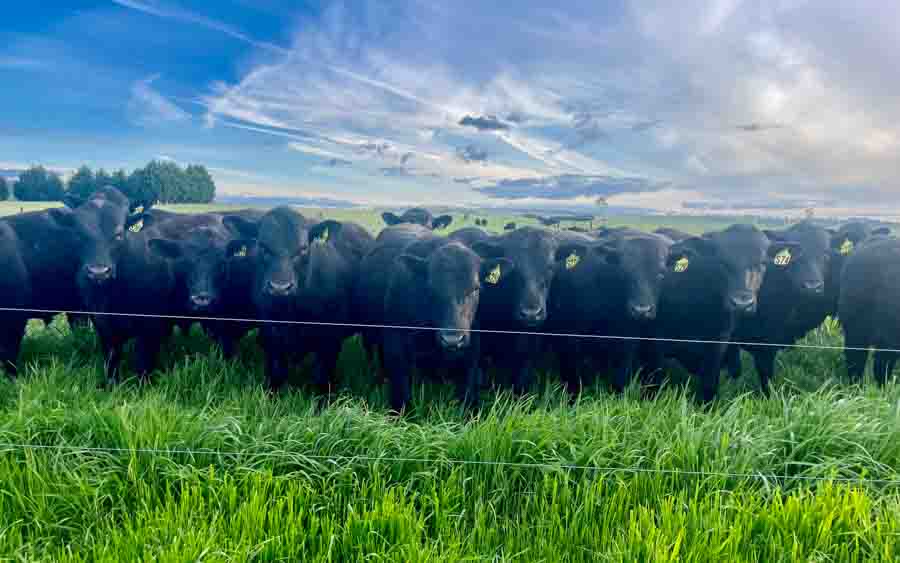After spending the first four years at Shannon Vale managing their land with conventional farming practices, the Chappells decided to start looking into reducing their synthetic inputs. 'The cost of inputs and the amount required to be effective were increasing significantly,' says Greg. Some of the inputs were also raising health concerns. 'It got to the point where you would open a container, and you'd immediately feel sick.'
It got to the point where you would open a container, and you'd immediately feel sick.
The pastures had previously been managed under a high input and regular pasture tilling and recultivation system. They were in a cycle of dependence on inputs, spending almost all their gross margin on the maintenance of their pasture and seeing most pastures return to at least 80% undesirable species after sowing. They were also relying on costly supplement grain to sustain bull weight gain.
The property also suffered from numerous areas of severely compacted soil known as 'hard pans'. Greg suspects that this soil compaction was likely caused by the over-application of nitrogen to the land. 'Soil is a three-dimensional substrate,' explains Greg. 'It has a chemical component, a structural component and a biological component. Modern agriculture has focused mostly on the chemical component, using more and more inputs to sustain farming at the expense of the biological and structural component of the soil.'
Modern agriculture has focused mostly on the chemical component (of the soil), using inputs to sustain farming at the expense of the biological and structural component of the soil.
Desirable species were not growing in the hard pans, as the layer of soil a couple of centimetres under the surface was too compacted for roots to penetrate. These areas consisted mostly of weeds or bare ground. Greg and Sally needed to break up these hard pans and start to restore the biological and structural components of these areas so that they could support the growth of fodder.




